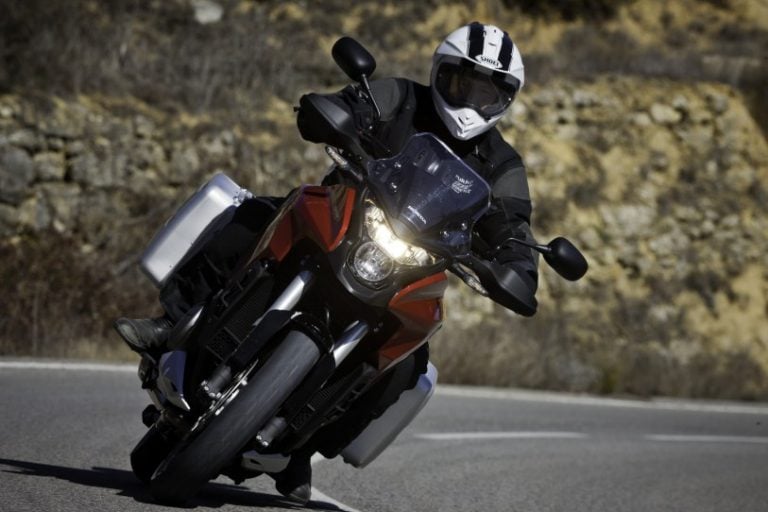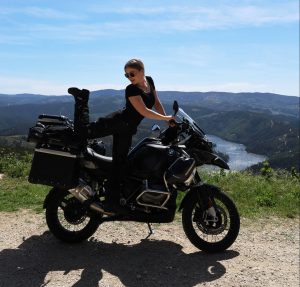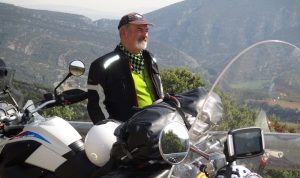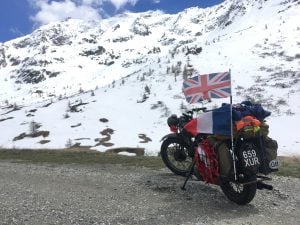Planning a motorcycle trip may be the most fun you can have off two wheels. There’s nothing quite like pouring over a map to research routes and destinations, while imagining the sights, sounds and smells awaiting you behind exotic place names.
For some, this is as far as planning a motorcycle trip goes. All they need is a direction of travel, a tent and a credit card before hitting the road. For others, the devil is in the detail. Meticulous planning ahead of time allows them to relax and enjoy the ride, safe in the knowledge things like food, accommodation and fuel are all in hand.
Here at ABR, we tend to walk the line between the two approaches when we’re riding routes for the magazine. Some planning is needed because we have a brief to work to and deadlines to meet. But experience has shown the unexpected often leads to adventure, and it’s the discoveries that we make on the road we get most excited about sharing with you.
Because we all approach motorcycle trips in different ways, we’ve pooled our knowledge with that of travel experts Brittany Ferries to highlight the information we all should know before travelling to three of Europe’s most popular motorcycle touring destinations – France, Spain and Portugal.
Passport
Ensure you have at least six months left on your passport before you travel.
If you’re planning a trip away this year, it’s worth checking now to see when your passport expires.
Taking the ferry
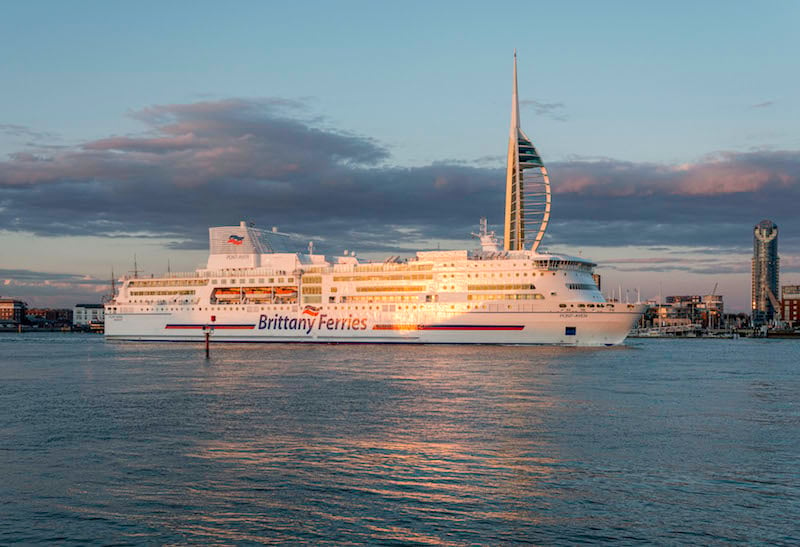
There’s nothing quite the like the feeling of riding up the ramp onto a ferry, strapping your bike down and sailing off to sea at the start of a motorbike adventure. There are a couple of tips to keep in mind before your journey.
- Book in advance – ferries are very popular during the peak summer holiday periods so ensure you book a ticket well in advance of your trip. The further ahead you book, the more likely you are to get a better price.
- Book a cabin – this is essential for me on an overnight journey, but I also try and book a cabin on long day cruises. Being able to relax, get some sleep and have somewhere to leave my gear makes the journey that bit more enjoyable.
- Join the mailing list – as a rule I try and limit the number of mailing lists I sign up to, but Brittany Ferries’ emails are well worth receiving in your inbox to ensure you are first to hear about offers and deals on crossings.
Riding in France
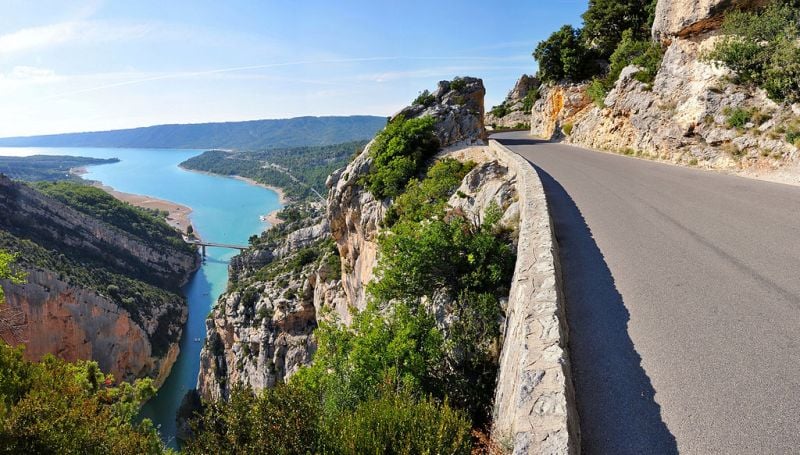
France is a wonderful place to ride a motorcycle, offering some of the best roads and Alpine passes in the world. But you’ll notice the joy of riding in this beautiful country as soon as you roll off the ferry.
The French road network has more than 9,000 miles of autoroutes which are generally well-maintained and quieter than roads here in the UK. However, our favourites are the smaller D (departmental) roads and N (national) routes, that offer up the best riding. You won’t regret choosing these routes over the motorway if time allows.
French toll roads are an excellent way to cover long distances at speed, but beware of the charges which can add up to hundreds of pounds over the duration of a trip depending on how far you travel.
What you need to ride in France
- Valid UK driving licence – you’ll need to be over 18 to ride. You may need an International Driving Permit (IDP) if you only have a paper licence, not a photocard one, or have a licence issued in Gibraltar, Guernsey, Jersey or the Isle of Man.
- Proof of ID (UK passport)
- Proof of vehicle ownership – this is your vehicle registration document, known as a V5C
- Proof of insurance
- UK sticker on your bike
- A hi-vis vest or jacket – you must wear this in the event of an emergency by the roadside
- Spare set of motorcycle bulbs
- A road legal vehicle which must be taxed in the UK
- Spare pair of glasses (if you wear spectacles)
- Breathalyser – while this law does not seem to be enforced, we’d recommend taking one
- CE-approved gloves – if you’re caught without them you face a fine
- You must also display dipped headlights when moving
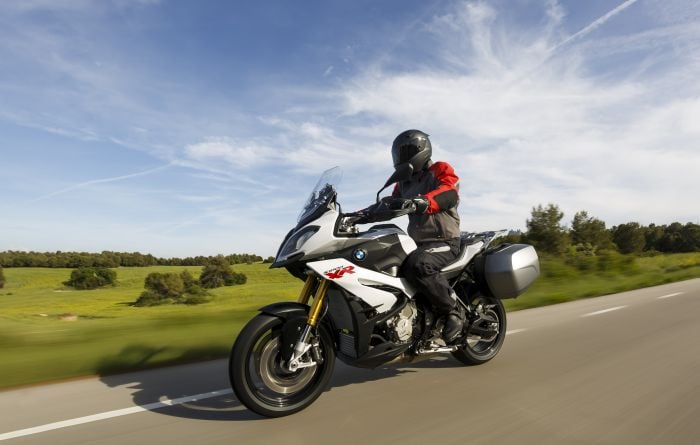
General speed limits (unless otherwise indicated)
Be aware, static speed cameras in France aren’t as visible as they are in the UK. They are usually housed in a grey, freestanding box by the side of the road and aren’t particularly easy to spot.
Speed limits can vary depending on whether the weather is dry or wet and if roadworks are taking place.
- Motorways – 130 kph (80 mph) reduced to 110 kph (68 mph) in wet weather.
- Dual carriageways – 110 kph (68 mph) reduced to 100 kph (62 mph) in wet weather.
- Other roads – 80 kph (50 mph) reduced to 70kph (43 mph) in wet weather.
- Towns – generally 50 kph (31 mph), although it can drop to 20 kph – 30 kph (12 mph – 18 mph) in certain areas.
Breakdown and accidents
- If you breakdown or have an accident, park in the emergency lane if possible and call 112.
- If you have a collision with a French vehicle, you’ll be asked to fill in a constat amiable (an amiable declaration) by the driver of the other vehicle.
- Be careful if you don’t speak the language and try and call your own insurance company to get the advice of a local French representative before signing anything.
- If someone is injured, you must remain at the scene until the police attend.
- In the event of an injury, or if the road is blocked, police must be called.
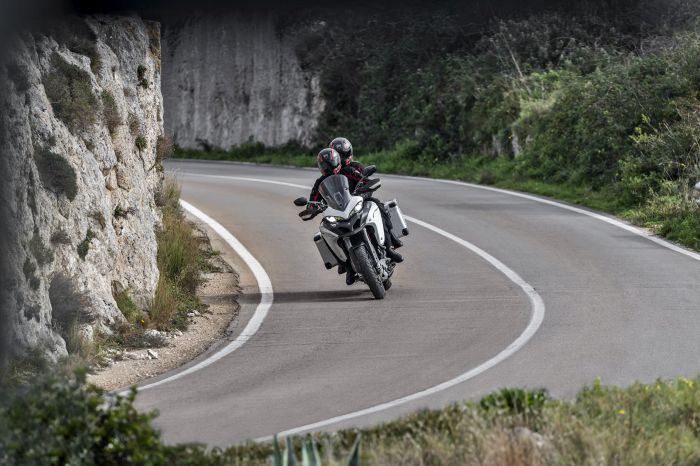
Emergency telephone numbers
112 – European general emergency number
15 – Medical emergency, accidents, ambulance
17 – Police or Gendarmerie (automatically transferred to the nearest station)
18 – Fire brigade (Les sapeurs pompiers)
Low emission zones
The French government has introduced low emission zones that require a colour-coded ‘clean air’ sticker called a Crit’Air vignette. What colour you receive will depend on how heavily polluting your bike is.
They cost around €3 but you could face a fine of up to £117 if you don’t have one. You can buy a sticker from www.certificat-air.gouv.fr/en/.
Permanent and flexible emission zones are currently operating in Paris, Lyon, Grenoble, Lille, Strasbourg, Toulouse, Chambery and Marseille. However, these are expected to increase in number.
We’d recommend checking out the latest RAC advice on the topic before leaving for France.
Riding in Spain
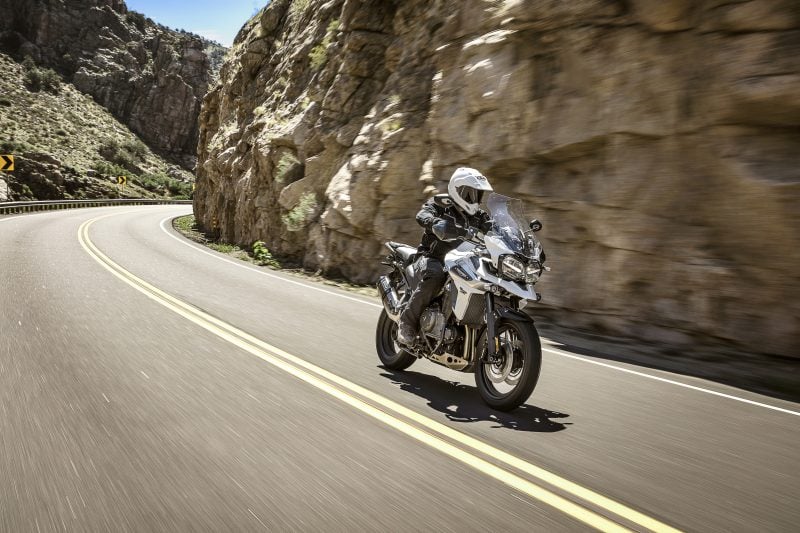
Warm weather, superb roads, delicious food and spectacular landscapes, Spain has it all when it comes to motorcycle touring. Whether we follow the coastline or head inland to the mountains, Spain is a country we find ourselves returning to time and time again. Thanks to Brittany Ferries you can travel direct to northern Spain.
Like France, the Spanish motorways and toll roads generally have excellent surfaces and are not as busy as those in the UK. Beyond these, the quality of roads varies greatly and you should be prepared for uneven surfaces, particularly in more remote areas.
We’d recommend avoiding toll roads if you can, as they can prove costly. However, they are an excellent way to cover long distances in a short amount of time, so it’s worth budgeting for toll charges if you are on a tight schedule.
What you need to ride in Spain
- Valid UK driving licence – you need to be 18 years old to ride a motorcycle over 75cc. You may need an IDP if you only have a paper licence, not a photocard one, or have a licence issued in Gibraltar, Guernsey, Jersey or the Isle of Man.
- Proof of ID (UK passport)
- Proof of vehicle ownership – this is your vehicle registration document, known as a V5C
- Proof of insurance
- UK sticker on your bike
- A hi-vis vest or jacket
- A road legal vehicle which must be taxed in the UK
- Spare pair of glasses (if you wear spectacles)
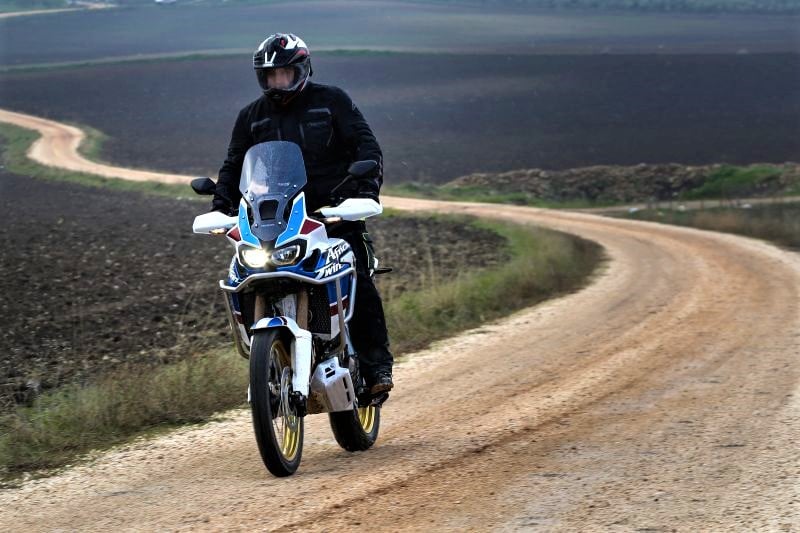
General speed limits (unless otherwise indicated)
- Motorways and toll roads – 120 kph (75 mph)
- Dual carriageways – 110 kph (68 mph)
- Other roads – 90 kph (56 mph)
- Towns – generally 50 kph (31 mph)
Tips for riding in Spain
- All fines must be paid on the spot, with police escorts to a cash machines common for those without cash.
- Use of a horn in urban areas is prohibited, except in an emergency. Flash your lights instead.
- Spanish riders don’t usually stop at zebra crossings unless they are accompanied by traffic lights.
- In the event of an accident, don’t sign any forms if you don’t understand what’s written on them. Call you insurance company and ask to speak to a local representative.
Emergency telephone numbers
112 – European general emergency number
061 – Medical emergency
080 – Fire brigade
091 – Police
Riding in Portugal
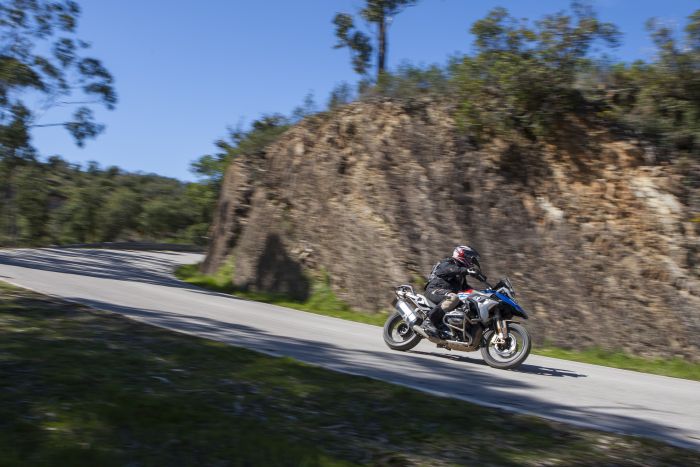
Portugal is a real treat for any motorcycle traveller and a place we’d recommend to anyone looking for adventure. While it shares its landscape and climate with Spain, it feels more remote and isolated than its neighbour.
Rich in culture and spectacular scenery, it is a country you can easily lose yourself in, whether you’re exploring the mountainous interior or hugging the stunningly beautiful coastline.
A Brittany Ferries crossing to Santander or Bilbao in Spain, leaves you with a short ride to Portugal and its motorcycling riches.
What you need to ride in Portugal
- Valid UK driving licence – you’ll need to be over 18 to ride. You may need an IDP if you only have a paper licence, not a photocard one, or have a licence issued in Gibraltar, Guernsey, Jersey or the Isle of Man.
- UK sticker
- Proof of ID (UK passport)
- Proof of vehicle ownership – this is your vehicle registration document, known as a V5C.
- A hi-vis vest or jacket
- A road legal vehicle which must be taxed in the UK.
- Spare pair of glasses (if you wear spectacles).
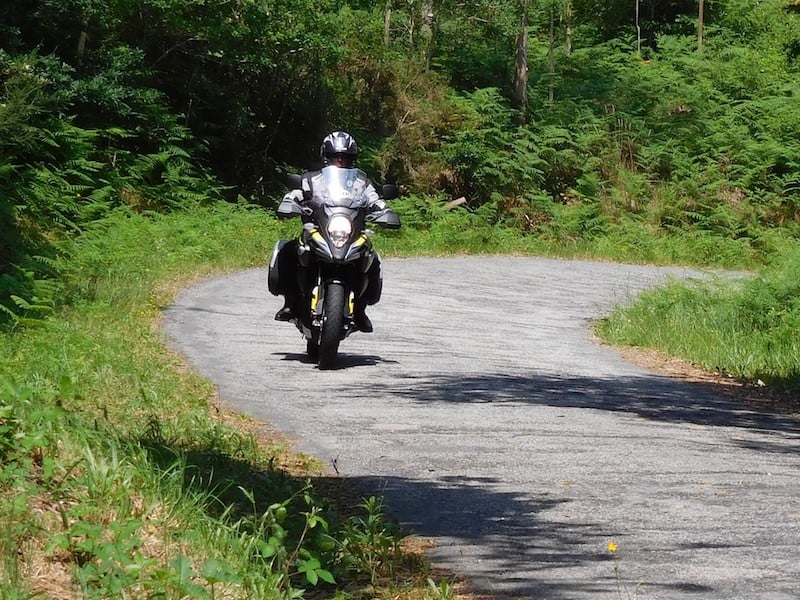
General speed limits (unless otherwise indicated)
- Motorways – 120 kph (75 mph)
- Open roads including dual carriageways 90 – 100 kph (56 – 62 mph)
- Towns – generally 50 kph (31 mph)
Riding tips
- Be aware of Via Verde (green lane) toll lanes marked by a big green sign with a slanted V on them. To use these lanes you must buy or rent a prepaid electronic transponder which is debited every time you drive through a toll booth.
- Portugal’s road accident fatality rate is higher than the EU average, with drunk driving more common than it should be. Take care and assume drivers may be unpredictable.
- If you are involved in a collision in which someone is hurt, you must wait at the scene for the police to arrive.
- Police can issue on the spot fines which must be paid in cash in local currency to the arresting officer.
Emergency telephone numbers
112 – European general emergency number


